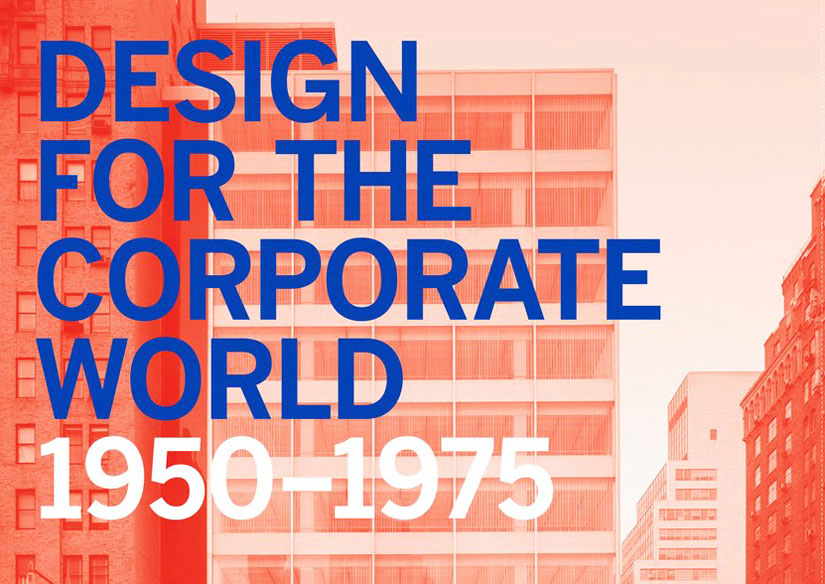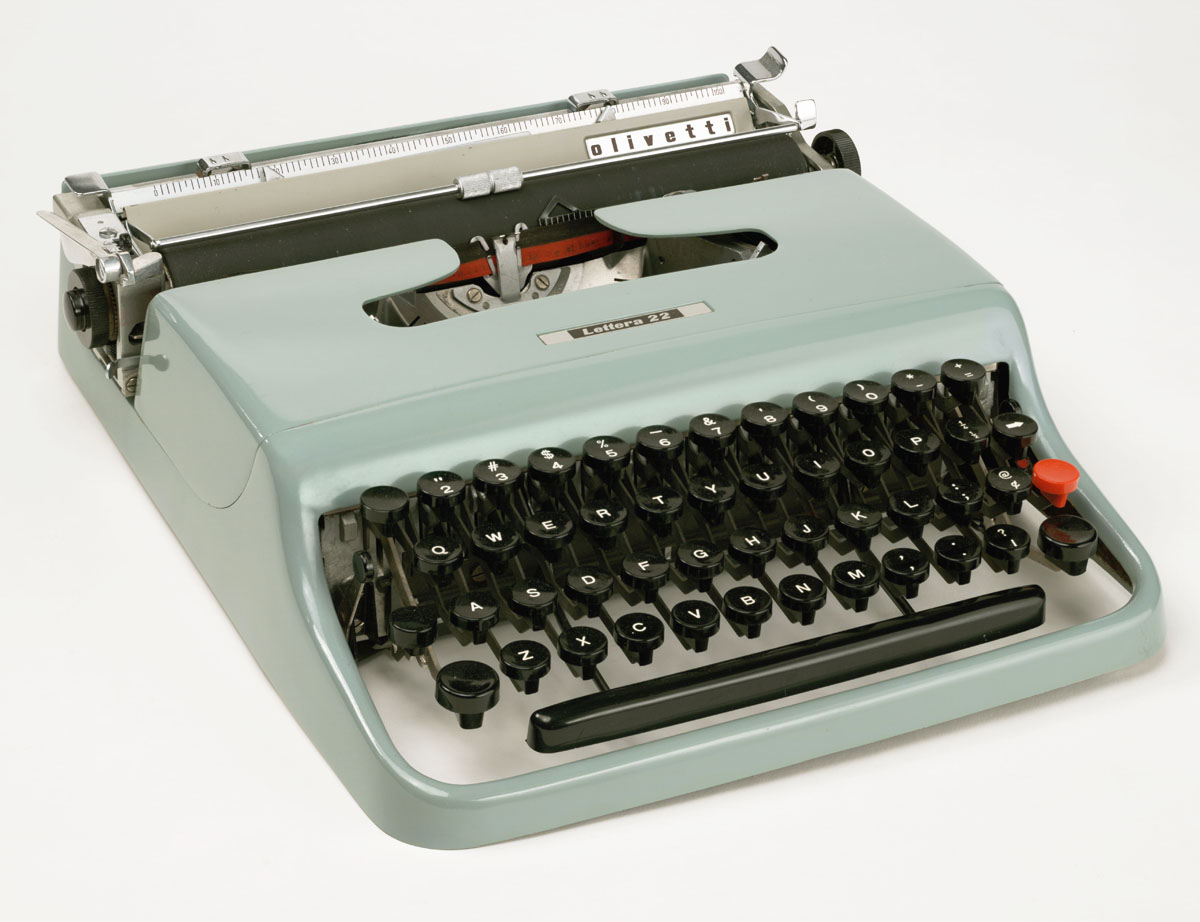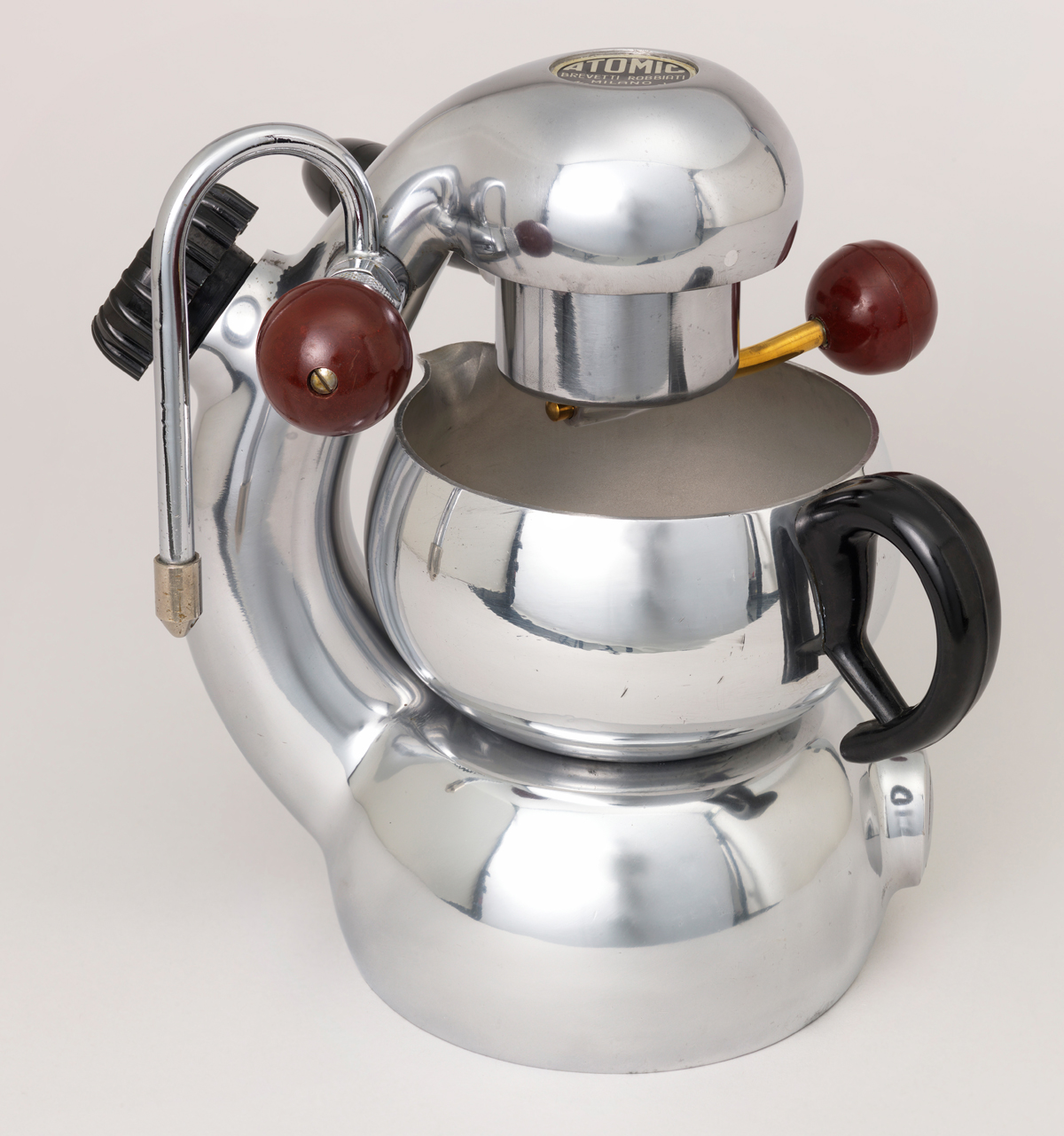'Creativity on the Line'
 |
|
exhibit that just opened (running through August 21) at Stanford University's Cantor Arts Center. The 126-item exhibit explores the dilemma of the mid-century designer as posed by British inventor Bernard Benson back in 1961: "Do I want to be honest but broke, or do I want to prostitute myself and be loaded?" |
|
|
 |
|
Ray Eames (U.S.A, 1912–1988), Molded Fiberglass chair with table arm, for Herman Miller, Inc., 1960–61. Fiberglass, fabric, metal, and plastic. LA County Museum of Art, Los Angeles, Gift of the employees of Herman Miller, Inc. |
 |
|
|
 |
|
|
Mid-century modern is, above all, about better living through design. That was ostensibly the goal of the now-discontinued annual Industrial Design Conference, and a fascinating new museum exhibit explores the commercial demands on mid-century designers who attended it.
British inventor Bernard Benson cut to the chase in his 1961 address to the conference at Aspen Institute, quoted in 'Creativity on the Line: Design and the Corporate World, 1950-1975,' which opened last week (and runs through August 21) at Stanford University's Cantor Arts Center.
"The dilemma of the designer these days is, 'How can I have my cake and eat it too?'" Benson said. "He is really saying to himself, 'Do I want to be honest but broke, or do I want to prostitute myself and be loaded?'"
Wim de Wit, Adjunct Curator of Architecture and Design at Cantor and curator of the 'Creativity on the Line' exhibit, said he put quotes like Benson's from conference speeches right up front in the exhibit because he wants them "to sort of hover over every object" in the 126-item exhibition.
"You need those quotes to make the point," he explained of an exhibit that he says is mostly about "the ambivalence of wanting to do a certain kind of work, [but] at the same time worrying about selling out to commerce."
"That's the thing about industrial designers and architects: on the one hand they are artists," said the Dutch-born curator. "At the same time, they have an office, and they need to keep those offices going."
De Wit said he didn't decide on the focus of the exhibit until twice culling the archives of the design conference, now stewarded at the Getty Research Institute in Los Angeles. Explaining the title, he said it is wordplay but "also about creativity being in jeopardy."
"It developed slowly," he said of his decision to highlight the workplace relationship between designers and corporate execs. "I could have done something totally different, but this is what I became fascinated with."
After culling the conference archives, de Wit visited the major art museums of San Francisco and Los Angeles as well as several important institutions in New York, plus the Hagley Museum and Library in Wilmington, Delaware.
Seeking item loans from these places was "not too difficult," he said. "There's always negotiation. Most of it, we got what we asked for."
Several iconic designs are on exhibit, including those of Charles and Ray Eames for Herman Miller, Lester Beall for Caterpillar, Dieter Rams for Braun, and Eliot Noyes, designer of the IBM Selectric typewriter.
"Design must be a function of management, attentive to but not controlled by sales or engineering departments," quoth Noyes in the exhibit. His work with IBM is depicted in one of four videos, along with one each about the Industrial Design Conference, the 3M Company dust mask, and Saul Bass's 'Why Man Creates.' The latter was a production for Kaiser Aluminum that de Wit said is the perfect introduction to the exhibition.




